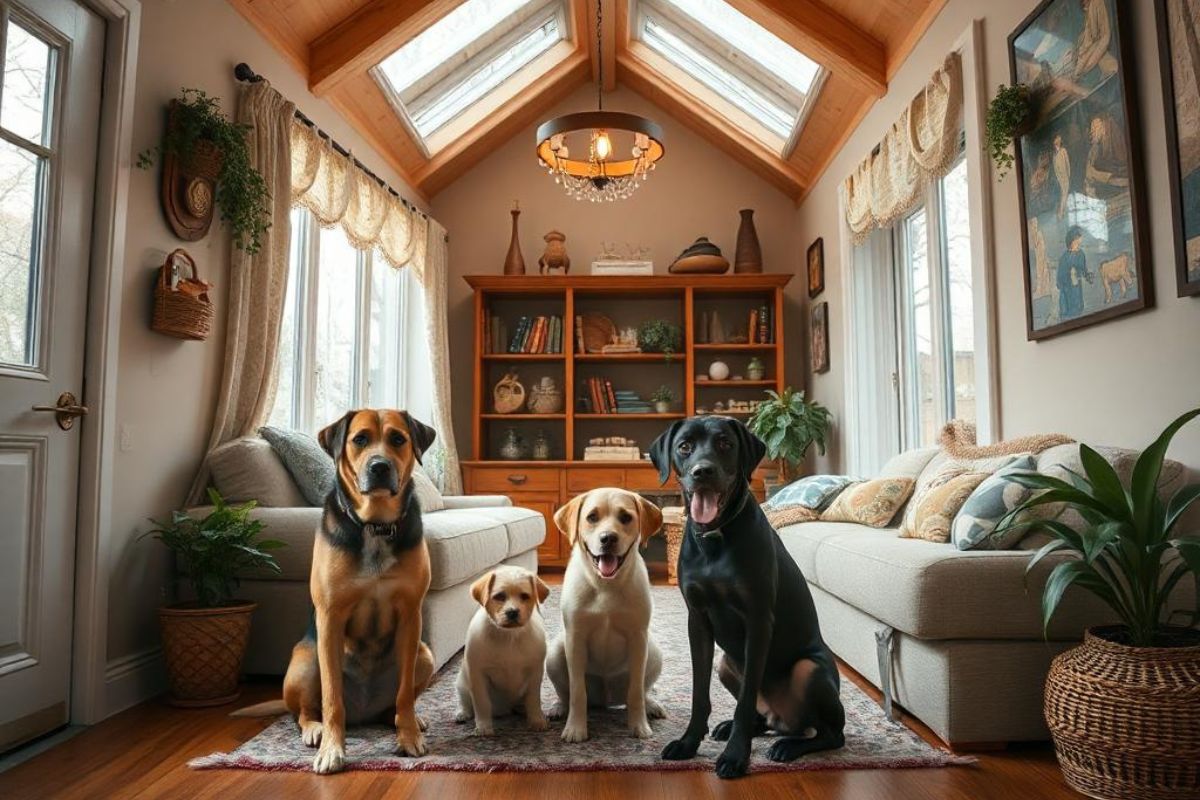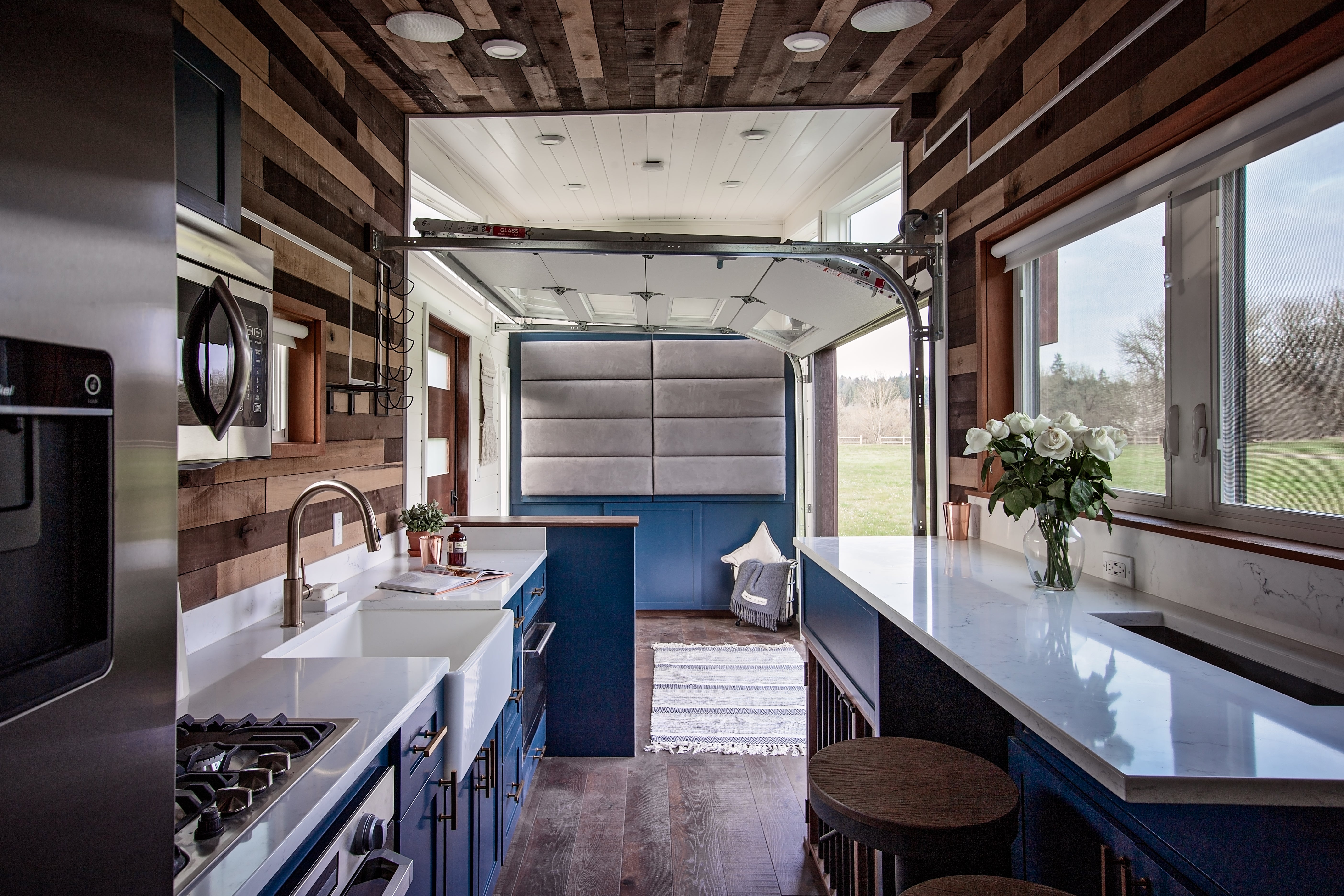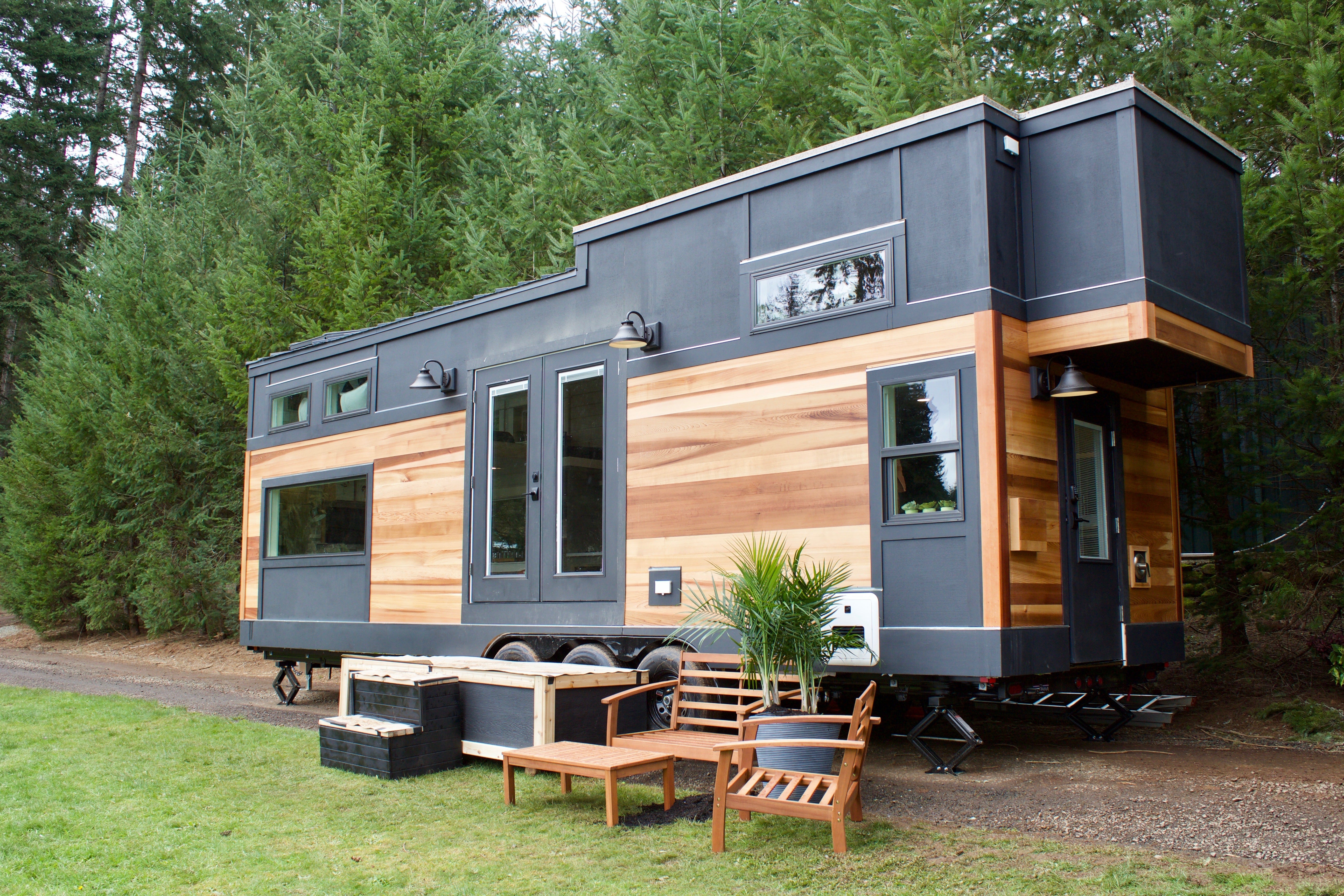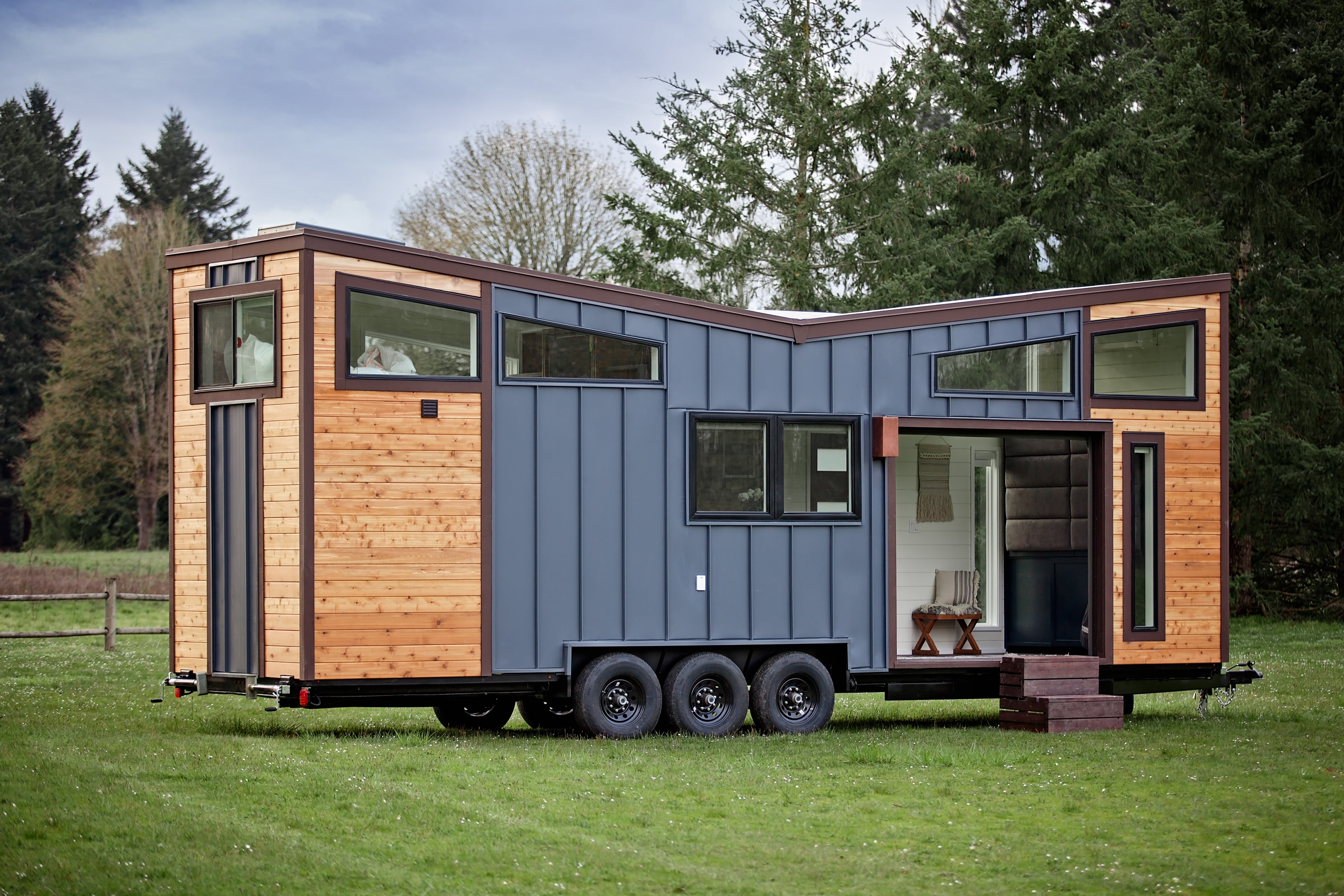Adapting to tiny living with family and pets requires strategic organization and a minimalist approach. Start by evaluating essentials and adopting a one-in, one-out rule to control clutter. Use multifunctional furniture and vertical storage to save space.
Designate zones for eating, working, and relaxing by using rugs or curtains, keeping pathways clear for easy movement. Make sure your pets have designated areas for comfort, using durable materials for furniture and easy-to-clean flooring. Foster family harmony with clear communication and shared space schedules. Regular decluttering and creative solutions will help you thrive in compact spaces, ensuring a blend of comfort and efficiency.
Key Takeaways
- Implement multifunctional furniture to optimize space for family and pets.
- Designate specific zones for pet activities to maintain order and comfort.
- Involve family in space planning to accommodate everyone's needs effectively.
- Regular decluttering ensures a tidy and functional living environment.
- Use vertical storage solutions to maximize space efficiency.
Embracing Minimalist Lifestyle
Shifting to a minimalist lifestyle can feel intimidating, but it's a practical approach when living in a tiny space with family and pets. You start by evaluating what's truly essential. Every item should serve a purpose or bring joy. Reducing clutter not only frees up physical space but also creates a calmer, more organized environment.
Consider implementing a one-in, one-out rule. For every new item you bring into your home, remove one. This keeps your space from becoming overwhelmed with unnecessary things. Focus on quality over quantity. Invest in durable, multipurpose items that can withstand daily use by both family and pets.
When it comes to clothing, embrace a capsule wardrobe. Choose versatile pieces that can be mixed and matched to create multiple outfits. This minimizes closet space and simplifies decision-making.
Involve your family in the process. Discuss the benefits of minimalism and encourage everyone to participate in decluttering. This fosters a sense of ownership and responsibility, making the shift smoother for all.
Lastly, remember that minimalism is a journey. It's about making intentional choices and creating a space that supports your lifestyle, family, and pets effectively.
Designing Multifunctional Spaces
Designing multifunctional spaces is vital when you're living in a tiny home with family and pets. Every square inch counts, so it's important to make rooms work double duty. Start by choosing furniture that serves multiple purposes. A sofa bed transforms your living room into a guest space, while a dining table with foldable leaves can adjust to fit more guests or save space when not in use.
Consider vertical space to maximize functionality. Wall-mounted shelves or hanging storage can free up floor space and keep items easily reachable. Think about incorporating built-in seating with hidden storage underneath, which can be perfect for both sitting and stowing away items.
It's also significant to keep pathways clear for easy movement, especially if you have pets that need space to roam. Opt for sliding doors or curtains instead of traditional doors to save space and create flexible boundaries between areas.
Finally, involve your family in planning these spaces. Understanding each member's needs guarantees everyone has a comfortable spot to relax, work, and play. By creatively using multifunctional designs, you can make your tiny home feel more spacious and accommodating for everyone.

Creative Storage Solutions
In a tiny home, making the most of every corner is key, so let's focus on creative storage solutions. Start by using vertical space. Install shelves or wall-mounted cabinets to keep items off the floor. Consider floating shelves for easy access and a clean look. Next, utilize furniture with built-in storage. Beds with drawers underneath or ottomans that open up can store extra linens, clothes, or toys.
Don't overlook the potential of multi-use storage. For instance, a fold-out desk can serve as both a workspace and a storage area for office supplies. Magnetic strips mounted on walls can hold kitchen knives or metal tools, freeing up drawer space.
Another tip is to use baskets and bins. They're perfect for organizing smaller items and can slide neatly under tables or inside closets. Labeling them helps maintain order. Also, think about using the back of doors. Over-the-door organizers can store everything from shoes to cleaning supplies.
Lastly, consider custom solutions. Tailor storage to fit your specific needs and spaces. With a bit of creativity, you'll find that even the tiniest of homes can be organized and efficient.
Pet-Friendly Design Ideas
When it comes to incorporating pets into a tiny living space, thoughtful design is essential to guarantee both comfort and functionality. Start by selecting furniture that doubles as a pet haven. Consider a bench that opens to reveal a cozy bed or a coffee table with a built-in scratching post for your cat. Multi-purpose pieces save space and keep your pet content.
Designate specific zones for your pets. A corner nook can serve as a feeding station, minimizing mess in shared areas. Choose compact, easy-to-clean mats and bowls that blend with your décor while ensuring accessibility for your pet. Elevating feeding stations helps prevent spills, especially for larger animals.
Utilize vertical space to your advantage. Install wall-mounted shelves or platforms to give cats a place to climb and perch. Small pets like rabbits or hamsters can benefit from tiered enclosures that expand upward rather than outward, maximizing floor space.
Incorporate pet-friendly materials. Durable, stain-resistant fabrics are ideal for furniture to withstand wear and tear. Opt for flooring that's easy to clean, like laminate or tile, to manage pet-related accidents efficiently. By integrating these pet-friendly design ideas, you create a harmonious, efficient living environment for everyone.

Managing Shared Spaces
Pet-friendly design ideas make your tiny home more accommodating, but managing shared spaces requires a strategic approach to guarantee harmony for all occupants. Start by designating specific areas for different activities. Create zones for eating, working, and relaxing. Use multi-functional furniture like fold-out tables and convertible sofas to maximize space.
Involve your family in deciding how these areas will be used. This makes certain everyone understands the functionality of each zone. For pets, designate a corner or a shelf for their toys and supplies. Use baskets or bins to keep things organized and accessible.
Maintaining cleanliness is essential in small spaces. Encourage everyone to tidy up immediately after using a shared area. This minimizes clutter and prevents accidents, especially if you have pets that might chew on misplaced items.
Implement a rotation system for high-demand spaces like the bathroom or the kitchen. This helps avoid conflicts and makes sure everyone gets a fair turn. Use clear communication to set schedules or routines that work for everyone.
Finally, make it a habit to regularly reassess your shared space arrangements. As needs change, being flexible and open to adjustments maintains a harmonious living environment.
Maintaining Privacy and Boundaries
Privacy can often feel elusive in a tiny home, but establishing boundaries is essential for a peaceful coexistence. Start by setting clear rules about personal space. Designate specific areas where each family member can retreat for some alone time. It might be a corner of the room or a particular chair—what matters is that everyone respects these zones.
Communicate openly about your need for privacy. Encourage family members to express when they need space and agree on signals that indicate someone doesn't want to be disturbed. This can prevent misunderstandings and reduce tension.
Use visual and physical barriers to create a sense of separation. Curtains, dividers, or even bookshelves can provide a modest buffer between shared and private areas. These can be easy to install and adjust as needed.
Incorporate noise-canceling headphones or white noise machines to manage noise levels. This helps create an auditory boundary, essential when visual separation isn't possible.
Finally, establish routines that respect each other's time. Knowing when others will be using shared spaces can help you plan your day and maintain a sense of personal control. With these strategies, you can balance togetherness and privacy effectively.
Efficient Space Utilization
While maintaining privacy is important, making the most of your limited space guarantees comfort and functionality for everyone. Start by evaluating your space for multi-purpose furniture. A sofa bed, foldable dining table, or storage ottoman can serve dual purposes, saving precious square footage. Think vertically too; wall-mounted shelves or hanging organizers keep the floor clear and offer additional storage.
Next, decluttering is essential. Regularly review belongings and let go of items you don't need. Adopting a minimalist mindset helps in keeping the space tidy and stress-free. Consider using clear storage bins to make it easy to find what you need without rummaging through everything.
Zoning your space can make it more efficient. Use rugs or curtains to delineate areas for different activities like working, sleeping, and playing. This creates a sense of order and guarantees each space serves its intended purpose.
Involve your family and pets by considering their needs. Make sure everyone, including your pets, has designated spots for their belongings. For instance, a pet bed tucked under a table or a small toy basket can make a big difference. Efficient space utilization requires creativity and flexibility but enhances your tiny living experience considerably.
Fostering Family Harmony
To foster family harmony in a tiny living space, start by establishing clear communication channels. Regular family meetings can help everyone express their needs and concerns. Set a specific time each week to discuss what's working and what isn't. Make sure every family member, regardless of age, has a chance to speak and be heard. This practice builds a sense of community and cooperation.
Create a schedule for shared spaces like the kitchen and bathroom. Assign time slots to avoid overlaps and conflicts. It's crucial to be flexible, though, since rigidity can lead to frustration. Encourage everyone to clean up after themselves to maintain a tidy environment. A clutter-free space reduces stress and enhances harmony.
Designate personal zones, even if they're small. Everyone needs a bit of privacy to recharge. It could be a corner with a comfy chair or a space to keep personal items. This gesture respects individual needs and promotes peace.
Finally, prioritize family activities that strengthen bonds. Whether it's a game night or a shared hobby, these activities create joy and understanding. By focusing on communication, organization, and shared interests, you'll cultivate a harmonious tiny living experience.

Ensuring Pet Comfort
Caring for pets in a tiny living space requires thoughtful consideration and creativity. You need to guarantee your furry friends feel comfortable and have enough room to move. Start by designating a specific area for your pet. This might be a cozy corner with a comfy bed or a small nook where they can retreat. Use vertical space creatively—install shelves or cat trees to give them places to climb and explore.
Keep your pet's essentials organized. Use storage bins for toys, grooming tools, and food. This helps keep your space tidy and guarantees you can quickly find what you need. Regularly clean your pet's area to maintain a fresh environment.
Guarantee your pet gets enough exercise to compensate for the limited space. Take dogs for regular walks and play interactive games indoors. For cats, consider using toys that stimulate their hunting instincts.
Pay attention to your pet's behavior. Signs of stress or anxiety, like excessive barking or scratching, may indicate they're uncomfortable. In such cases, consider adjusting their space or routine. With a little creativity, you can make your pet feel at home, even in a tiny living space.
Overcoming Tiny Living Challenges
Living in a tiny space with family and pets can be challenging, but with smart planning, you can make it work. Start by organizing and decluttering. Limit your belongings to what's essential and functional. Multipurpose furniture, like a fold-out table or a sofa bed, can save valuable space. Use vertical storage solutions, such as shelves or hooks, to keep floors clear and organized.
Create defined zones for activities. Designate specific areas for sleeping, working, and relaxing to maintain a sense of order. Use room dividers or curtains to establish privacy when needed. For pets, establish a dedicated corner with their bed and toys, ensuring they know where to retreat.
Communication is key in tight quarters. Discuss schedules and expectations with family members to prevent conflicts. Share household chores and responsibilities to reduce stress and maintain harmony.
Ventilation and lighting can transform small spaces. Open windows to allow fresh air circulation and use natural light to create a sense of openness. Strategically place mirrors to make rooms feel larger and brighter.
Finally, embrace outdoor spaces. Spend time outside whenever possible to alleviate the feeling of confinement. Tiny living requires creativity and cooperation, but with these strategies, it's manageable and rewarding.
Conclusion
Living tiny with family and pets is a rewarding journey when you embrace minimalism and think creatively. By designing multifunctional spaces and incorporating clever storage, you maximize your home's potential. Pet-friendly designs guarantee everyone feels comfortable, while efficient space use helps manage shared areas. Prioritize fostering harmony and addressing challenges as they arise. With a practical approach, you'll create a cozy, functional environment that meets your family's needs and keeps your pets happy.






Share: